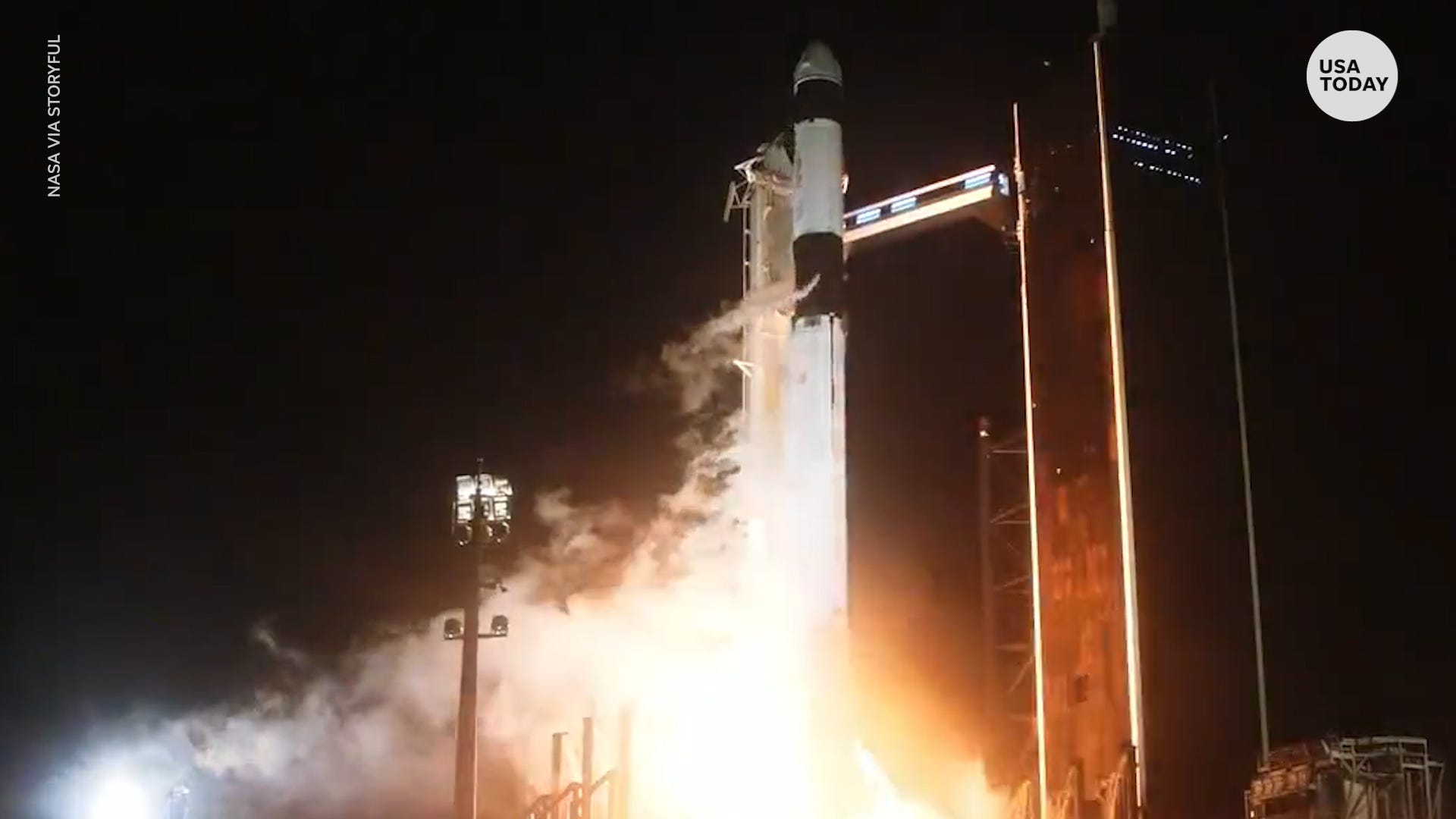
SpaceX and NASA Crew-3 mission finally launch into space after delays
After several delays, the SpaceX and NASA Crew-3 mission finally launched into space with four astronauts.
USA TODAY, Storyful
Michael Strahan, former football star and host of "Good Morning America," will be taking off with a crew of five other passengers on Dec. 9, amidst a global pandemic and rising cases of the new omicron variant.
Strahan won't be the first civilian in space. In September, the Inspiration4 launch sent four civilians (a physician's assistant, an aerospace worker, a professor and a billionaire) into orbit. In October, William Shatner became the oldest person to go into space, at the age of 90.
Civilian spaceflight launches have had a shining spotlight in a time when COVID devastated regions all over the globe. Some, like Prince William, have even criticized the obsession on spaceflight, saying billionaires and companies should focus more on addressing issues closer to Earth.
But could technology developed for space help us battle the pandemic?
An article released in September in the peer-reviewed journal Nature Medicine investigated how space-based technologies could be used to help manage and prevent pandemics.
How much a seat into space costs: William Shatner went to space. Here's how much it would cost you.
Telemedicine was 'developed by space agencies'
When astronauts are in space, for example, their medical information is meticulously tracked, the paper says.
In fact, astronauts often run medical experiments in space to help researchers better understand how the human body reacts to the properties of space, according to Phil McAlister, director of commercial spaceflight at NASA.
For the SpaceX Inspiration4 launch, McAlister said, civilians conducted a series of experiments, such as drawing blood in space, and shared the data with researchers on Earth.
"Telemedicine was actually developed by space agencies as well in order to provide care, monitor the care of astronauts," says Dr. Farhan Asrar, a medical doctor and global faculty member at the International Space University. Asrar was a contributor to the Nature Medicine article.
Similarly, Asrar points out, telemedicine can be used to monitor and assess COVID patients remotely without the risk of infecting healthcare workers.
Asrar says that wearable technology has already been used by Canadian astronauts to monitor several key parameters of health, such as blood pressure, temperature, breathing rate and heart rate, all of which were streamed hundreds of miles from Earth aboard the International Space Station.
These wearable devices can be used by healthcare workers to detect early on whether they are developing and spreading symptoms, the paper suggests.
More: NASA launches spacecraft to test asteroid defense concept
Using satellite imagery to monitor progression
Satellite imagery could contribute to pandemic planning and the distribution of vaccines against COVID-19, according to the paper.
Satellites launched into space have already helped plot disease transmission during the Ebola outbreak, the paper points out. In the fight against polio, satellite images found marginalized and previously unknown villages in Nigeria, assisting with eradication efforts.
"There are several parameters which you can monitor using satellites," Asrar says. "We can monitor temperatures that are ideal for these infectious conditions so that if an outbreak is occurring, you can use this technology to monitor the progression."
Asrar cites using satellite monitoring on mosquito populations as a potential way to predict outbreaks of malaria.
How does COVID-19 affect me?: Don’t miss an update with the Coronavirus Watch newsletter.
Isolation and developing techniques to preserve mental health
One more thing we can learn from astronauts is the science of managing isolation, the paper says.
Astronauts often have to be in space for days or months on end, with little or no contact with their loved ones. In a similar sense, social distancing guidelines have prevented people from gathering and made those with limited technological resources even more isolated, the paper points out.
In another article published in Nature in May of 2020, astronauts shared ways that they dealt with isolation in space, including having a carefully managed daily routine and structuring work around an inspiring mission.
Both research papers suggest that by understanding how astronauts cope with isolation, we can develop better techniques for preserving our mental health during the pandemic.
Feel like you’re surviving, not thriving: Join us at Keeping it Together, a newsletter about wellness and living life amid COVID-19.
Follow Michelle Shen on Twitter @michelle_shen10
https://news.google.com/__i/rss/rd/articles/CBMicWh0dHBzOi8vd3d3LnVzYXRvZGF5LmNvbS9zdG9yeS90ZWNoLzIwMjEvMTEvMjgvc3BhY2UtdGVjaG5vbG9neS1jb3ZpZC1wYW5kZW1pYy1oZWFsdGgtbWljaGFlbC1zdHJhaGFuLzg3ODgzNDQwMDIv0gEnaHR0cHM6Ly9hbXAudXNhdG9kYXkuY29tL2FtcC84Nzg4MzQ0MDAy?oc=5
2021-11-29 04:50:20Z
1165774065
Tidak ada komentar:
Posting Komentar